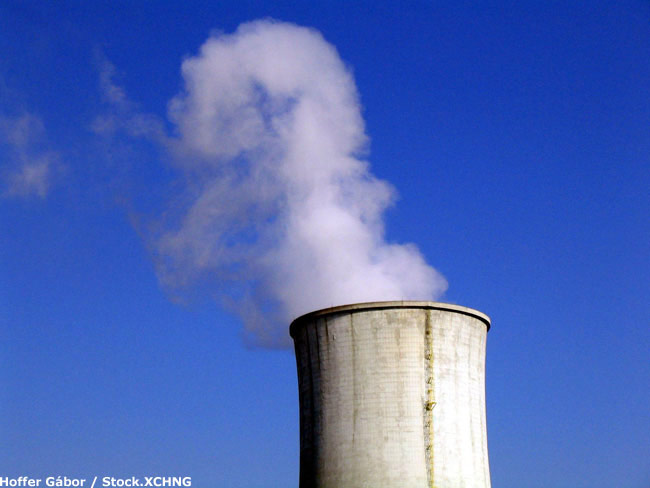New Device Vacuums Away Carbon Dioxide

A new device placed in say, Iceland, could suck up atmospheric carbon dioxide emitted from vehicles as far away as Tokyo, making it a potentially useful tool in battling ever-rising levels of this greenhouse gas.
Carbon dioxide molecules trap heat emanating from the Earth’s surface and send it back downward, warming up the atmosphere. Scientists think that steadily rising levels of this and other greenhouse gases will bring about potentially disastrous changes in Earth’s climate.
Scientists have proposed many possible ways to reduce the amount of carbon dioxide in the air: emissions could be reduced by using alternative energy sources, such as solar and wind power or alternative fuels, like ethanol or natural gas; and scrubbers could be placed on power plants to remove carbon dioxide and other gases from their exhaust.
But unlike these solutions, which reduce emissions, the new device captures carbon dioxide molecules that are already in the air and releases them as a pure carbon dioxide stream. This stream can be sequestered or used to enhance oil recovery.
“We are trapping carbon dioxide about 1,000 times faster than a tree does,” said study leader Klaus Lackner of Columbia University.
The device has an opening that pulls air in and the carbon dioxide in the air sticks to absorbent compounds (or sorbents) inside the device.
“Once you have the CO2 attached to the sorbent, you have to pry it loose again,” which is the costly part of the procedure, Lackner said.
Sign up for the Live Science daily newsletter now
Get the world’s most fascinating discoveries delivered straight to your inbox.
The scientists who created the device point out one particular advantage: It could be placed wherever sequestered carbon dioxide would be stored, instead of where emissions occur. By contrast, scrubbers are impractical to use on cars, which contribute 20 percent of the global carbon dioxide emissions, and it is difficult to retrofit power plants with the scrubbers.
The device has been tested in Arizona, and with some improvements, Lackner estimates that commercial versions could be ready to use in a few years. He envisions the technology being used to first compensate for emissions, then being used to drive carbon dioxide levels down, and finally combing the extracted carbon dioxide with hydrogen to make a liquid hydrocarbon fuel that is not a fossil fuel, though he says this advance is a good 50 years away.

Andrea Thompson is an associate editor at Scientific American, where she covers sustainability, energy and the environment. Prior to that, she was a senior writer covering climate science at Climate Central and a reporter and editor at Live Science, where she primarily covered Earth science and the environment. She holds a graduate degree in science health and environmental reporting from New York University, as well as a bachelor of science and and masters of science in atmospheric chemistry from the Georgia Institute of Technology.









